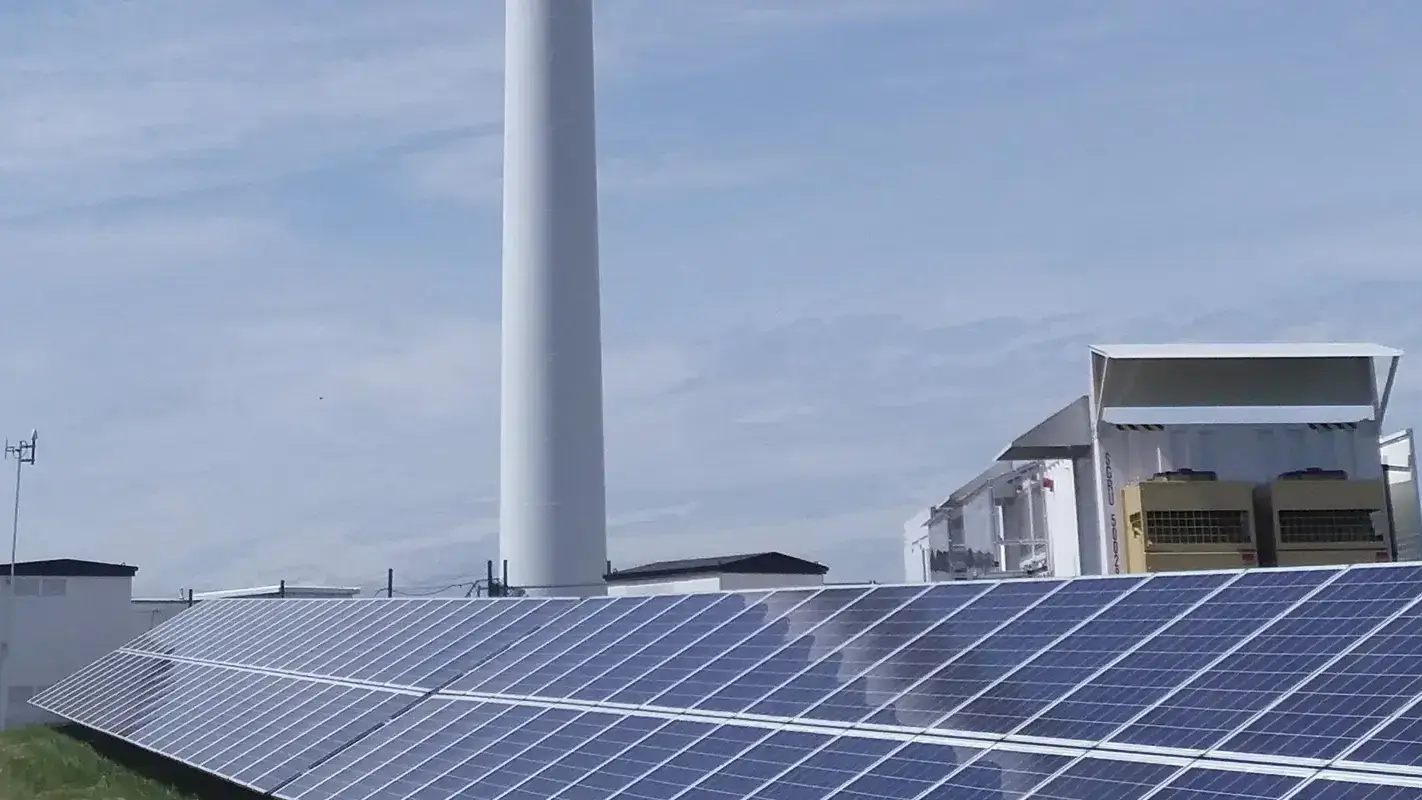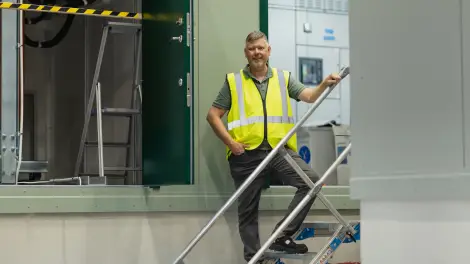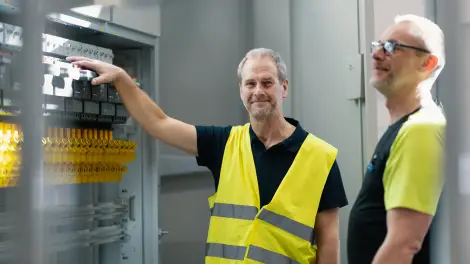Sweden´s first local energy system
In the village of Simris, a few kilometres south-west of Simrishamn in Österlen, an exciting project is being run with renewable and locally generated electricity. Holtab is one of the subcontractors.

E.ON has worked since 2016 to build up Sweden’s first local energy system, known as LES. The project began on an island outside Timrå, but after objections to building a wind farm it was relocated to Simris.
“The local power network suited the job well, and an appropriately-sized wind farm and a solar park significantly shortened the initial phase of the project,” notes Staffan Sjölander, project manager for LES at E.ON.
E.ON’s Local Energy System is designed to become completely self-sufficient in renewable energy. It first comes from the wind farm and solar park, and when it’s not windy or is dark outside, batteries continue to supply the consumers. As a backup, there is also a standby power facility that will be run on renewable fuel.
“Advanced control and regulation technology is applied to the various units in order to maintain good power quality,” adds Sjölander. As the energy from wind and solar installations is weather-dependent, their output will fluctuate. Consumption and production must always be in balance, which is where the control system comes in.”
E.ON sees the project as a business opportunity and a way of testing new technology and learning how to use it in the right way.
“In a possible future scenario, people will be interested in teaming up and solving their energy needs with locally produced, ideally renewable energy. But tiny micro-networks have special preconditions and often require a different technology than the installations we have today. In Simris, we now have an opportunity to learn about this situation in order to be prepared when the demand arises,” says Sjölander.
In other words, Simris is a project in which E.ON, with the aid of Holtab, assumes responsibility to promote the development of the Swedish energy system and create a market for new technology. One driving force is to create a self-sufficient system that can also handle the surplus produced at certain times.
“When we were contacted, there was a need to deliver a substation, but it very soon became apparent that the project was much more complex and advanced than we had initially thought, says Holtab’s project manager Michael Fohlin. Among other things, we had to build-in E.ON’s control and regulation system, and our design engineers also faced other stimulating challenges as we designed and built most of the components we don’t usually work with on an everyday basis.”
“Large parts of the content came from our standard range, but certain adaptations were also required.”
The project had short lead times and Holtab was given a free hand throughout the process. Fohlin explains:
“Orders of this kind suit us really well. E.ON asked us: “We want this particular function and that equipment, can you deliver?” That gives us as a supplier great scope for responding to and managing the customer’s idea and identifying the smartest solutions.”
For E.ON’s part, it was also thumbs up during the relatively short delivery time.
v“Holtab is cooperative, solution-oriented and has its own resources. We are really satisfied with how they worked together with us on this key development project, which is not just a Swedish project but a global one for E.ON. We test technologies in order to learn just how we can further develop them on other markets,” says Sjölander.
“We have had an extremely tight schedule: Holtab received new updated specifications in January and just over a month later we began full production in order to deliver the products during May. That shows the internal strength of Holtab. They are an ideal partner for us.”
What Holtab supplied
A walk-in substation called DER (Distributed Energy Resources) which acts as a nodal point in the local energy system, where electricity flows in different directions from production and storage on to various consumers. It is adapted to its purpose, is robustly constructed and no organic material is used on the exterior to ensure a long operating life.
The station comprises medium-voltage switchgear, inclusive of relay and control functions, a distribution transformer, current and voltage transformers for metering, equipment for substation automation, as well as the advanced control and regulation system which is the brain of the local energy system.



